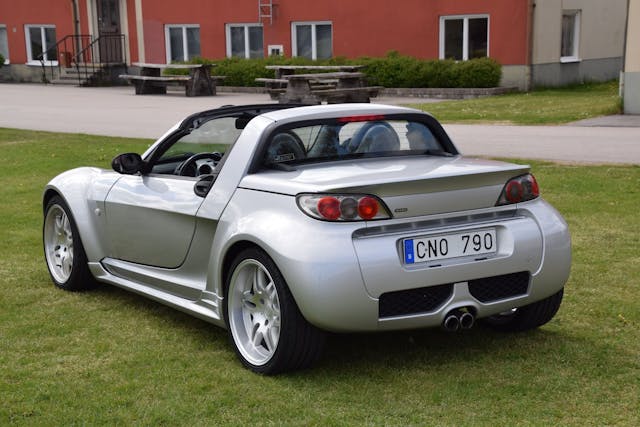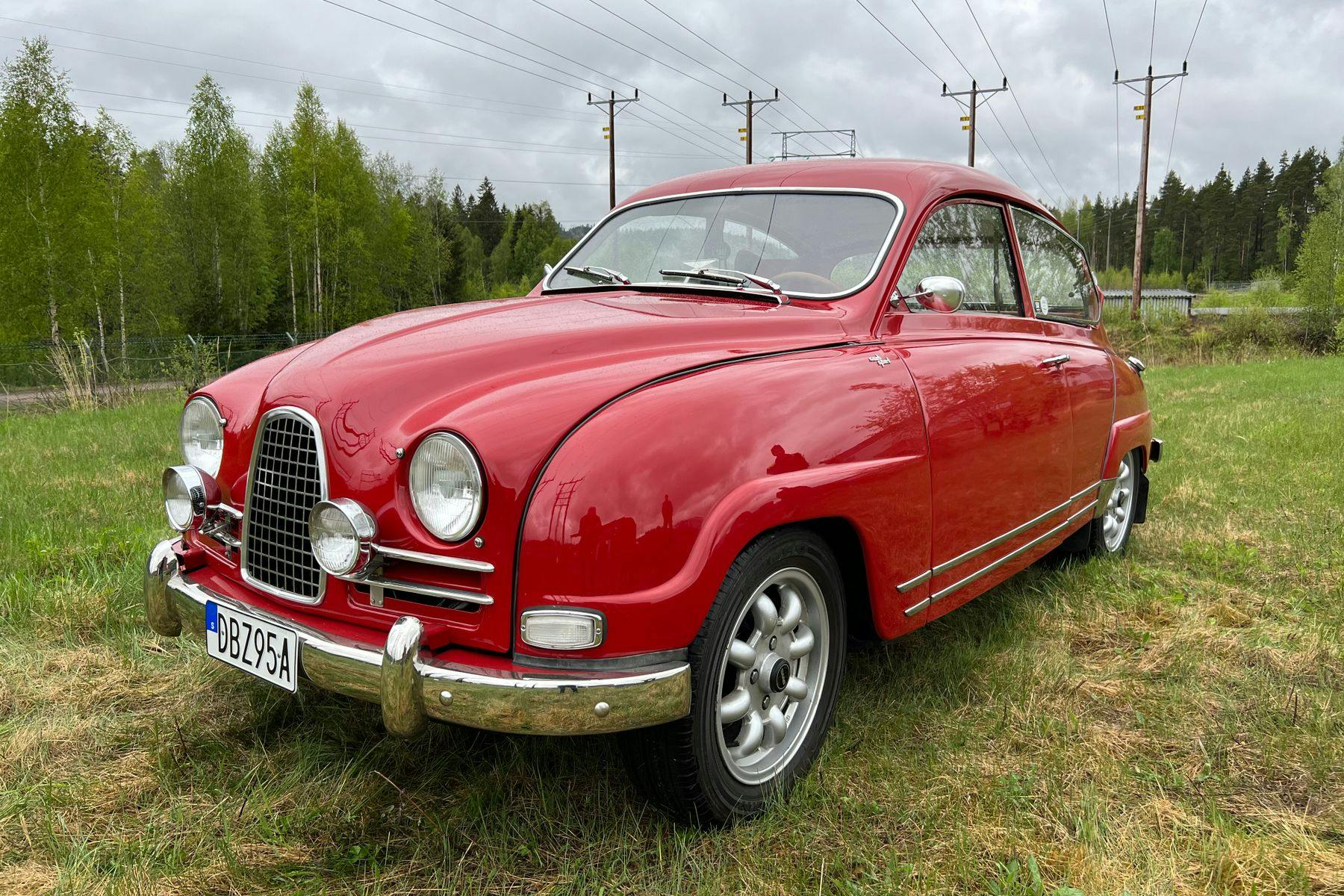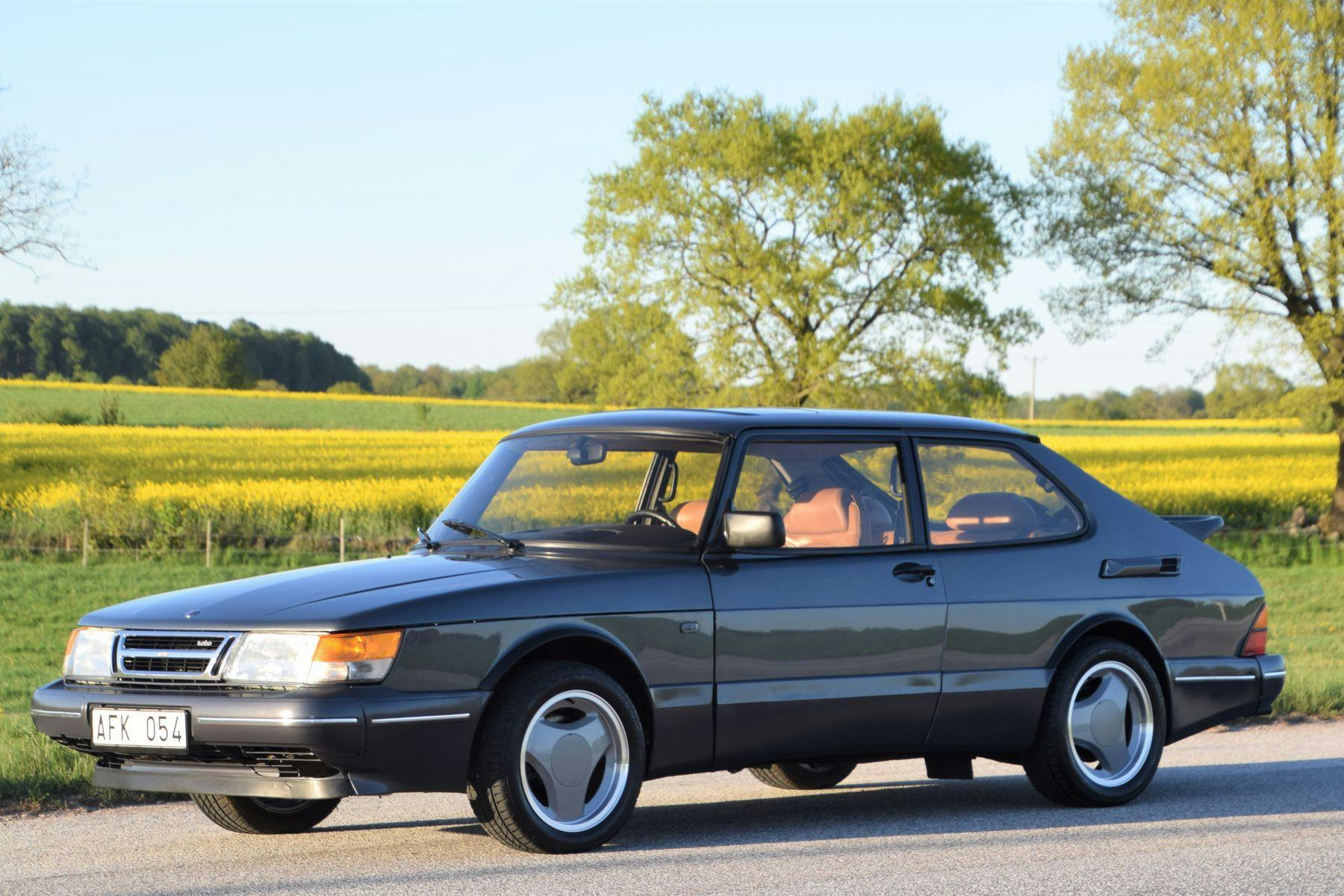Media | Articles
Missing Saab? Take your pick of this giant, 30-car collection
Those who followed with a heavy heart the demise of the Swedish car manufacturer Saab, which reached the end of its road in 2009, may miss the quirks of two-stroke engines, rear-hung doors, ignition barrels between seats, instruments that can be switched off while driving at night, and A-pillars built to withstand a thousand-pound elk. If you count yourself among those marque aficionados, rejoice: One of the largest privately owned collections of Saabs is being sold as individual lots to the public.
Next month marks the sale of the world’s largest collection of Saabs, ranging from a 1958 93B to a 2014 9-3 Aero, in Sweden. Spanning those 60 years are two-strokes, autobahn-baiting turbos, stylish convertibles, and even Saab’s rarely-seen SUV, the badge-engineered 9-7X that was based on a General Motors platform.
In all, 30 examples of the Trollhättan marque—collected over the past 20 years by former Saab dealer, Fred Johansson—are to go under the hammer, accompanied by 15 Opels and six Volvos.
It marks the end of the independent museum curated by Johansson’s dealership, Grahns Bilar AB, in Kisa, eastern Sweden. Wanting to retire, the majority of his car collection will be broken up.
As one of the region’s largest Saab/Opel dealers, established 60 years ago, Johansson began buying back the best examples of models he’d previously sold in 2002 with the idea of creating a museum. As the collection of cars “coming home” grew, Kisa Automotive Museum opened to the public three years later, moving to new premises in 2015.
Marketplace
Buy and sell classics with confidence

The Museum’s cars are either original or fully restored, with traceable histories back to their point of sale; many have four figure mileages. Among the most valuable cars in the Saab collection are the two-stroke models, including a 1966 96 Sport Monte Carlo 850 (built to celebrate works driver Erik Carlsson’s rally victories on the Monte in 1962 and 1963) and a time-warp 96 from 1965, with 12,500 kilometers (7767 miles) on the clock, still wearing its original tires. Both cars are expected to fetch between 220-250,000 Swedish Kronor (£17,950 to £20,400).
There are examples of the 93, 96, 96 V4, 99, 900, 9000, 9-3, 9-5 and 9-7X on offer, with a pair of 99s (a 1979 GL 2.0 and a 2975km/1848-mile 1978 EMS 2.0) regarded as the museum’s best condition vehicles. It’s a 45,600km (28,300 miles) 900 Cabriolet Turbo that’s expected to fetch the most from the Saab cache, however, guided at between 260-290,000 Swedish Kronor (£21,221 to £23,670).

There’s also an extensive range of Opels to peruse—a 1938 Super 6 De Luxe Cabriolet stands out—as well as an early Volvo 120 Series actually badged as an Amazon, as it remained in Sweden, and 120 through 220 series elsewhere, owing to a trademark dispute with German moped manufacturer, Kreidler.
And for a future classic, be sure to check out the 2004 Smart Roadster Brabus. The little 698-cc, three-cylinder turbo has earned something of a cult following for its enhanced, 100-hp performance and improved roadholding.







